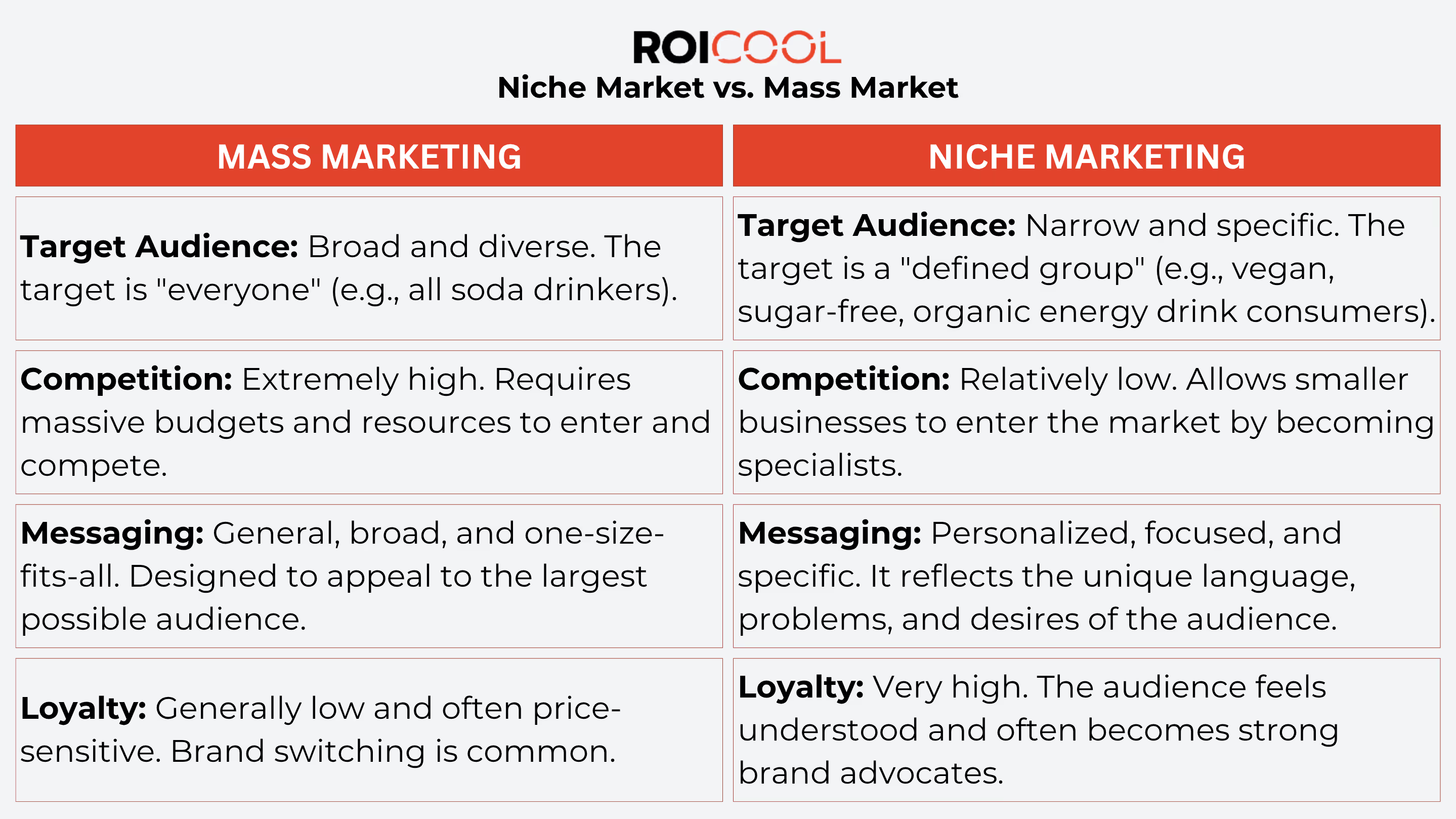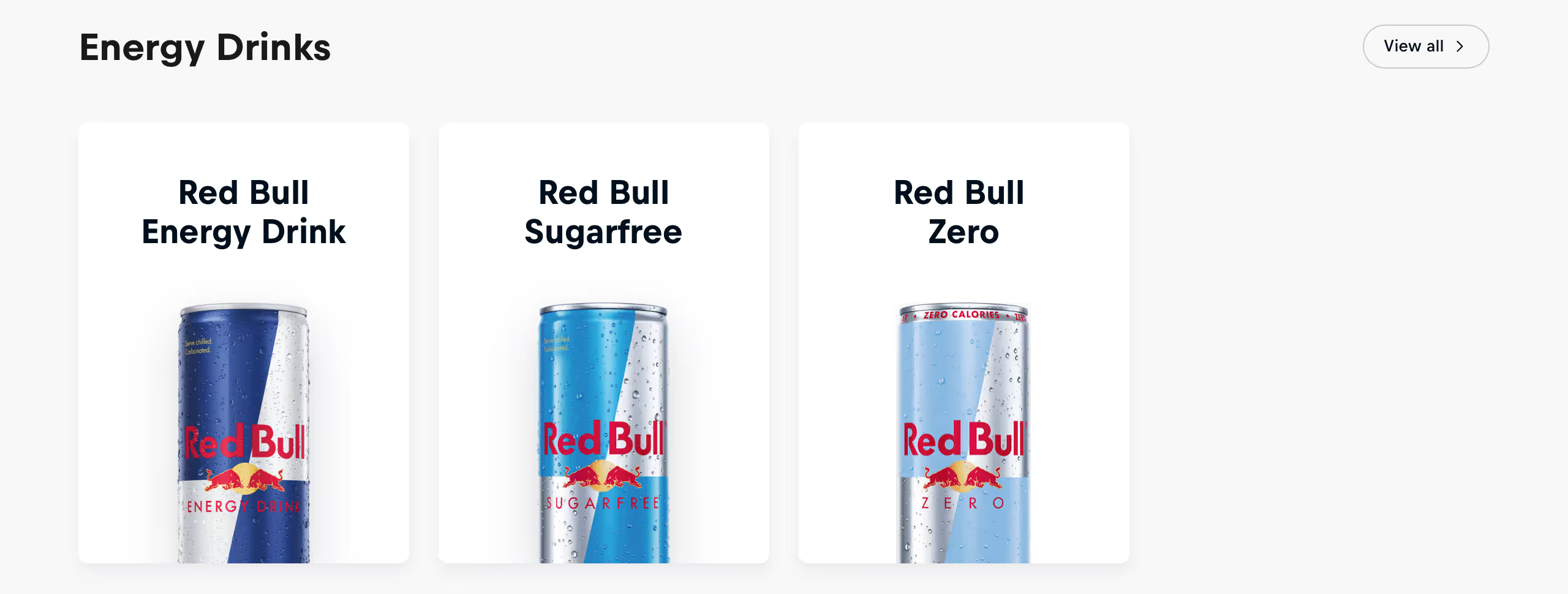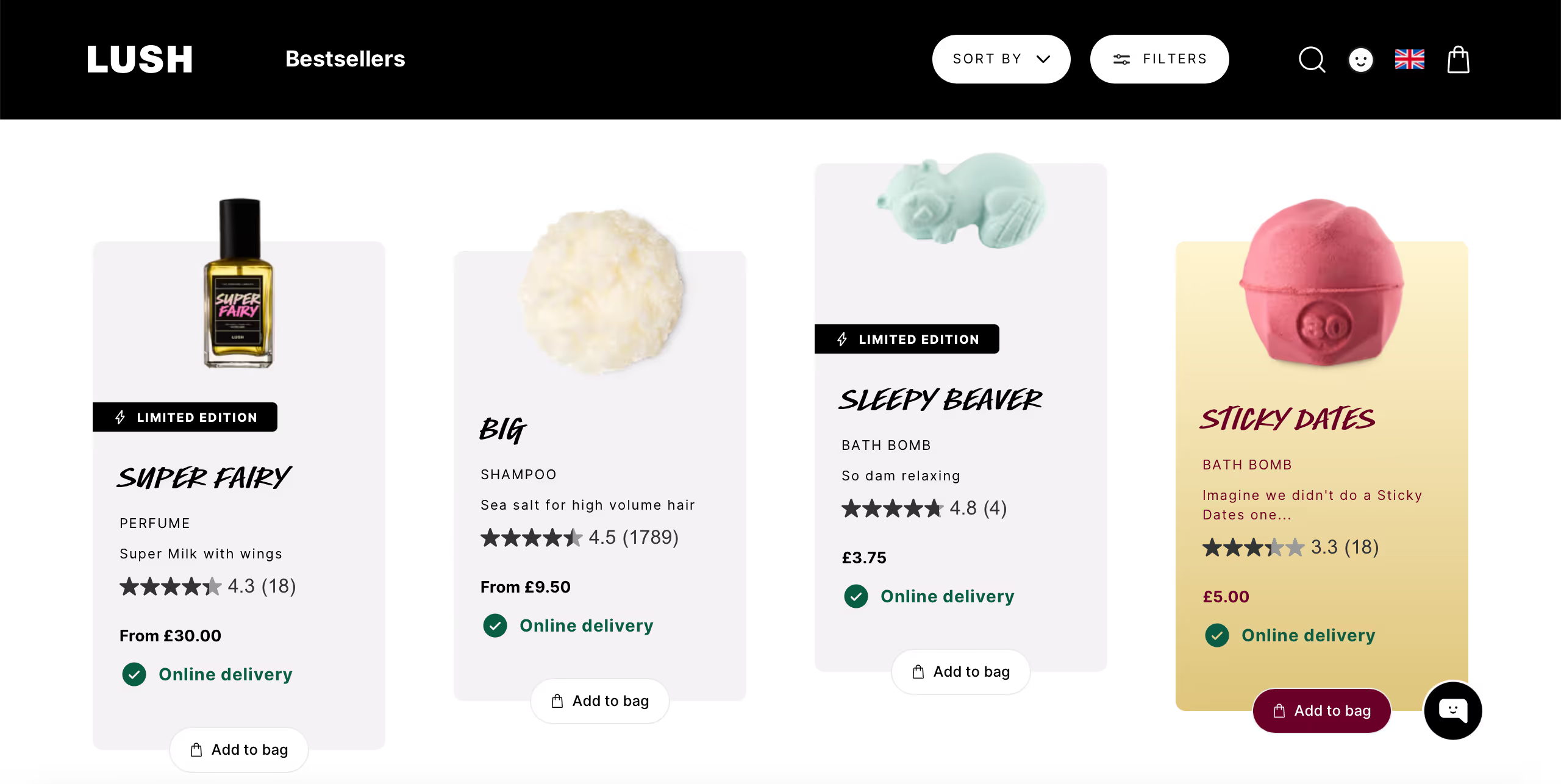In the age of endless digital choice, trying to appeal to "everyone" often results in appealing to "no one." Competing with massive corporations in a vast ocean is a quick way to deplete your budget and exhaust your team. A smarter, more surgical approach is to become the biggest fish in a small pond. This strategy is called niche marketing.
While mass marketing casts a wide, expensive net, niche marketing focuses your resources with laser precision. This comprehensive guide will define what niche marketing is, explore its advantages and risks, and provide a step-by-step framework for finding your niche and building a successful strategy.
What Is Niche Marketing?
Niche marketing is a marketing strategy that focuses on a specific, well-defined segment of a larger market. This segment—the "niche"—is comprised of a small group of potential customers with distinct needs, preferences, or characteristics that are not being adequately addressed by mainstream providers.
The core idea is to identify a small piece of the market and serve it better than anyone else. If mass marketing is like throwing a net into the ocean, niche marketing is like using specialized bait and tackle to catch a very specific type of fish.
This approach is an even more specialized version of what is a target market. It doesn't just select a target audience; it drills down into a micro-segment within that audience.
Niche Market vs. Mass Market: Key Differences
To grasp the power of niche marketing, it's helpful to contrast it with traditional mass marketing:
- Target Audience: Mass marketing targets "everyone" (e.g., all soda drinkers). Niche marketing targets a "specific group" (e.g., vegan, sugar-free, organic-certified energy drink consumers).
- Competition: Mass markets are characterized by high competition and massive budgets. Niche markets have significantly less competition, allowing smaller businesses to gain a foothold.
- Messaging: Mass marketing uses general, broad messaging. Niche marketing uses highly personalized language that speaks directly to the specific problems, desires, and values of the target audience.
- Loyalty: Niche audiences, feeling their unique needs are finally understood, often exhibit intense brand loyalty. They are driven by value, not just price.

The Advantages of Niche Marketing
Focusing on a specific segment offers numerous strategic benefits for businesses:
- Reduced Competition: As mentioned, large brands often ignore smaller segments because the potential market size isn't big enough for their massive overhead. This leaves the field open for you.
- Higher Customer Loyalty: When a customer in a niche feels "this product was made for me," they form a powerful bond with the brand. These customers are more likely to become brand evangelists.
- Better ROI and Lower Costs: Instead of wasting your budget on irrelevant audiences, every marketing dollar is spent on a highly qualified group. This leads to lower ad costs and higher conversion rates, especially in performance marketing campaigns.
- Establishing Authority: By focusing on one thing, you become the go-to expert in that field. When you sell "minimalist running shoes" instead of just "sneakers," you are seen as an authority, which is a core component of a strong brand identity.
The Disadvantages and Risks of Niche Marketing
Like any strategy, niche marketing is not without its potential challenges:
- Limited Growth Potential: By definition, your target market is small. This means there is a lower ceiling on your potential growth and market share.
- Market Dependency: If your entire business relies on one small niche, you are vulnerable. A shift in trends, new technology, or a decline in that niche's interest could put your business at significant risk.
- Threat of Large Players: If your niche becomes highly successful and profitable, it may attract the attention of large competitors with more resources.
How to Find a Profitable Niche Market
Finding the right niche is the most critical step. A niche must be more than just "small"; it must be "profitably viable."
- List Your Passions and Interests: The best niches often come from areas you understand deeply. Your authentic passion will be a competitive advantage.
- Identify Market Gaps and "Itches": Listen for problems. Where do you hear people say, "I wish there was a product that..."? Online forums, social media groups, and product reviews are gold mines for this.
- Conduct Keyword Research: Use keyword tools to see what people are searching for. "Long-tail" keywords with low competition but sufficient search volume, found using tools like Google Keyword Planner or Semrush, can signal potential niches.
- Evaluate Profitability: Are people in this niche willing and able to spend money on a solution? Are you solving a painful problem or serving a passionate hobby? Both can be very profitable.
Validating Your Niche Market Idea and Profitability Analysis
Finding a niche idea is only part of the equation. The truly critical step is to validate whether this idea has commercial potential. Starting with assumptions can lead to wasting your resources.
- Analyze Trends: Is your idea a rising trend or a fading fad? Use Google Trends to examine the search interest for keywords related to your chosen niche over the last 5 years. A stable or rising graph is a good sign.
- Test with an MVP (Minimum Viable Product): Before developing the entire product or service, test the market's interest. Create a simple landing page, clearly explain your product's value proposition, and add an "Early Access List" or "Pre-Order" button.
- Validate with Small-Budget Ads: Drive traffic to this landing page with a small ad budget (e.g., $50-$100) using highly specific niche targeting (on Meta ads, for example). Your goal isn't to make sales, but to see how willing people are to leave their email addresses or click the "pre-order" button. This is a real market response to your idea.
How to Do Niche Marketing: A Step-by-Step Guide
Once you've identified a promising niche, it's time to execute a strategy to own it.
1. Deeply Understand Your Market and Audience
You must go beyond basic demographics. Dig into psychographics: their values, fears, motivations, and lifestyle. Creating a detailed persona is essential. You need to speak their language and understand their problems better than they do.
2. Analyze Your Competition
Even in a niche, you'll likely have some competitors. Analyze what they are doing right and, more importantly, what they are doing wrong. Read their customer reviews. Their weaknesses are your opportunities. A thorough SEO analysis of their digital footprint will reveal their strategies.
3. Create Your Unique Value Proposition (USP)
You must clearly articulate how you fill the market gap. Why should a customer choose you over anyone else? "Cheaper" is not a sustainable niche strategy. Focus on being "better," "faster," "more specialized," "more luxurious," or "more personal."
4. Define Your Marketing Strategy
You know your audience and where they spend their time online. Now, build a focused digital marketing strategy guide to reach them. This strategy must be tailored specifically to the niche.
5. Test, Measure, and Optimize
Niche marketing is an iterative process. Launch your campaigns, closely monitor your data (conversion rates, traffic, engagement), and see what resonates. A/B testing messages and offers through targeted landing page optimization is the best way to refine your approach.
Effective Niche Marketing Strategies
Reaching a niche audience requires different tactics than mass-market campaigns:
- Hyper-Targeted Content Marketing: Don't write "Top 10 Laptops." Write "The 5 Best Laptops for Remote-Working Graphic Designers." Answer your niche's most specific questions.
- Micro-Influencers and Community Management: Forget celebrities with millions of followers. Partner with micro-influencers who are deeply respected and trusted within your niche. Be an active, helpful member of the forums and social media groups where your audience gathers.
- Focused Digital Advertising: Narrow your targeting to a razor's edge. In social media advertising and Google Ads, use highly specific interest, behavior, and demographic filters.
- Organic Authority through SEO: A strong SEO strategy focused on your niche's long-tail keywords will establish you as the number one resource in search results, building trust and generating organic leads.
Common Mistakes in Niche Marketing (and Their Solutions)
While niche marketing is powerful, it's easy to fall into some common traps. Avoiding these mistakes is vital for your strategy's success.
- Mistake 1: Making the Niche Too Narrow
A niche like "left-handed female photographers aged 30-35 living in Boston" might be too small to be commercially viable.
Solution: When defining your niche, check if there is a "sufficient market size." The market must be large enough to support a profitable business.
- Mistake 2: Ignoring Profitability
A niche may have a passionate audience, but if this audience lacks the purchasing power or willingness to spend money, it remains a hobby, not a business model.
Solution: When researching your niche market, analyze whether they spend money on similar products (competitor analysis) and their disposable income levels (persona research).
- Mistake 3: Overlooking Market Evolution
Niches are not static; they change, grow, or shrink. (Like the once-popular "fidget spinner" niche.)
Solution: Continuously monitor industry trends, customer feedback, and competitor moves. Be ready to adapt your strategy to these changes.
Successful Niche Marketing Examples
Many of today's biggest brands started by dominating a very specific niche:
- GoPro: The digital camera market was dominated by giants like Sony and Canon. GoPro didn't try to compete. Instead, it created its own niche: "durable, mountable, compact cameras for action sports and adventure." Their target was surfers, skiers, and skydivers—not families on vacation.

- Red Bull: In a beverage market dominated by Coca-Cola and Pepsi, Red Bull didn't sell "soda." It created the "energy drink" niche, targeting "students who needed to study" and "athletes who needed a boost." A different product, a smaller can, a higher price, and a marketing strategy focused on extreme sports allowed it to build an empire.

- Lush: In the massive cosmetics industry — a market dominated by chemicals, mass production, and heavy packaging — Lush chose a completely different path. Its niche was defined by products that were "fresh and handmade in-store," "cruelty-free (not tested on animals)," "ethically sourced," and featured "minimal (or even 'naked'/package-free) and recyclable packaging." This approach appealed to a growing audience that was off the radar of mainstream brands: conscious consumers with strong environmental and ethical concerns, who wanted to know the ingredients in their products, and who sought a unique sensory "experience" (the in-store smells, the fresh 'farmers' market' appearance of the products). This sharp focus enabled Lush to compete on value, not price, transforming it from a generic cosmetics company into a global 'cult' brand.

- Rolls-Royce: Within the already-exclusive luxury automotive market, Rolls-Royce operates in an even more specific niche. While brands like Mercedes-Benz or BMW compete on advanced technology and performance driving dynamics for the successful professional, Rolls-Royce targets a different stratosphere: the ultra-high-net-worth individual (UHNWI) who prioritizes "effortless power, absolute silence, and bespoke, handcrafted craftsmanship." Their niche is not the driver's car; it is the ultimate passenger experience. They do not sell transportation; they sell a "magic carpet ride"—a personal, silent, handcrafted sanctuary on wheels. This unwavering focus on peerless comfort and customization over mass-market luxury or sporty aggression defines their unique, multi-million-dollar niche.

Conclusion
In conclusion, niche marketing is not about thinking small; it's about thinking focused. It's a powerful strategy that allows you to sidestep overwhelming competition, build a tribe of loyal customers, and achieve a far greater return on your investment by prioritizing depth and loyalty over sheer volume.










